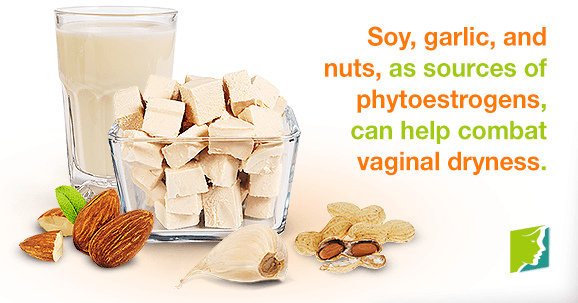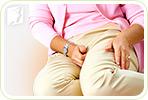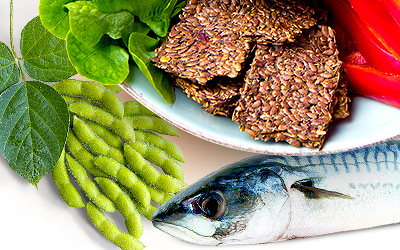Vaginal dryness is a common condition in women approaching menopause. This is due to shifting hormonal activity during the perimenopausal years, where estrogen levels fluctuate and ultimately decline, causing the vaginal tissues to become thin, lose elasticity, and secrete less moisture as a result. Rebalancing estrogen levels is often the key to stimulating the production of vaginal moisture. You can do this by increasing the number of phytoestrogens in your diet.
What Are Phytoestrogens?
Phytoestrogens, derived from plants, are compounds that behave like estrogen in the body. This means the body metabolizes and uses them in a way that is synonymous with that of the hormone estrogen. The symptoms of low estrogen-levels, such as vaginal dryness, can therefore be significantly reduced through the consumption of phytoestrogens.
Sources of Phytoestrogen
Increasing your intake of phytoestrogens during perimenopause can reduce vaginal dryness as well as many other menopause symptoms, such as night sweats, hot flashes, mood swings, and irregular periods. Conveniently, this can easily be achieved by incorporating plenty of the following foods and supplements into your diet:
Soy. Soy, found in foods like soymilk and tofu, is a significant source of phytoestrogens.
Nuts. Most nuts contain phytoestrogens, but almonds, chestnuts, and peanuts are the richest nut sources.
Whole grains. Whole grains, such as brown rice, oatmeal, and quinoa, are non-refined grains with phytoestrogenic properties, you can find them in energy bars and drinks.
Seeds. Flax, sunflower, and other oil seeds have a phytoestrogenic effect in the body.
- Green beans
- Garlic
Supplementing your diet with specific herbal remedies is also an effective way of boosting your phytoestrogen consumption. Estrogenic herbs like black cohosh, chasteberry, and dong quai have long been prized for their ability to relieve a number of menopause symptoms. Switch your usual choice of hot beverage to a medicinal infusion to regulate your hormonal imbalances and reduce resultant vaginal dryness.
Another Option
Likewise, hormone-regulating supplements are helpful alleviating hormonal imbalance. These supplement do not contain any estrogen, and instead stimulate the natural production of hormones.
Although vaginal dryness is among the most common of all menopause symptoms, it is also one of the most treatable. Increasing your phytoestrogen intake is not a quick-fix solution for dryness, but it can help. Applying natural vaginal moisturizers can also relieve immediate discomfort of dryness.
Sources
- Bacciottini, L., Falchetti A. , Pampaloni B., Bartolini E., Carossino A., and Brandi L. (2007). Phytoestrogens: food or drug? Clinical Cases in Mineral and Bone Metabolism, 4(2), 123-130. Retrieved from April 4, 2014, http://www.ncbi.nlm.nih.gov/pmc/articles/PMC2781234/
- Better Health Channel. (2013). Soybeans. Retrieved April 4, 2014, from http://www.betterhealth.vic.gov.au/bhcv2/bhcarticles.nsf/pages/Soybeans
- National Institutes of Health. (2011). Vaginal dryness: MedlinePlus Medical Encyclopedia. Retrieved April 4, 2014, from http://www.nlm.nih.gov/medlineplus/ency/article/000892.htm
- Patisaul, H.B. & Jefferson, W. (2010). The Pros and Cons of Phytoestrogens. Frontiers in neuroendocrinology, 31(4), 400-419. doi: 10.1016/j.yfrne.2010.03.003




